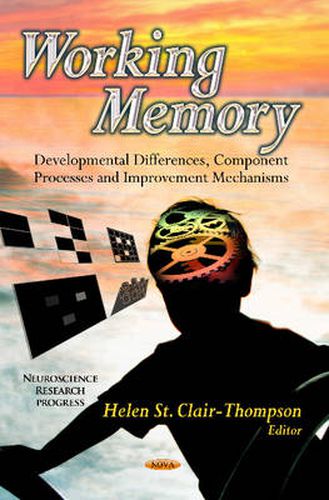Readings Newsletter
Become a Readings Member to make your shopping experience even easier.
Sign in or sign up for free!
You’re not far away from qualifying for FREE standard shipping within Australia
You’ve qualified for FREE standard shipping within Australia
The cart is loading…






This book presents the latest research in working memory from around the world. There are thirteen chapters which are ordered according to three main themes. Chapters concerned with developmental differences address the relationships between working memory and children’s learning and school performance, the role of working memory in the development of planning, associations between working memory and implicit learning, and theoretical models that account for visuo-spatial working memory development. Chapters concerned with component processes address issues of visual feature binding, aspects of cognitive load theory, the processing of affective stimuli in working memory, and the role of working memory in spatial orientation and navigation. Finally, a section on improvement mechanisms is comprised of chapters related to improving working memory through the differential outcomes procedure, applying transcranial alternating stimulation to the dorsolateral prefrontal cortex, and methods of cognitive remediation including working memory training both in participants with ADHD and other populations. The chapters provide comprehensive reviews as well as presenting new empirical data concerned with these topics. They aim to further the current understanding of working memory from developmental, cognitive, and educational perspectives. The book should therefore be of interest to all academics and researchers with an interest in working memory and related skills.
$9.00 standard shipping within Australia
FREE standard shipping within Australia for orders over $100.00
Express & International shipping calculated at checkout
This book presents the latest research in working memory from around the world. There are thirteen chapters which are ordered according to three main themes. Chapters concerned with developmental differences address the relationships between working memory and children’s learning and school performance, the role of working memory in the development of planning, associations between working memory and implicit learning, and theoretical models that account for visuo-spatial working memory development. Chapters concerned with component processes address issues of visual feature binding, aspects of cognitive load theory, the processing of affective stimuli in working memory, and the role of working memory in spatial orientation and navigation. Finally, a section on improvement mechanisms is comprised of chapters related to improving working memory through the differential outcomes procedure, applying transcranial alternating stimulation to the dorsolateral prefrontal cortex, and methods of cognitive remediation including working memory training both in participants with ADHD and other populations. The chapters provide comprehensive reviews as well as presenting new empirical data concerned with these topics. They aim to further the current understanding of working memory from developmental, cognitive, and educational perspectives. The book should therefore be of interest to all academics and researchers with an interest in working memory and related skills.